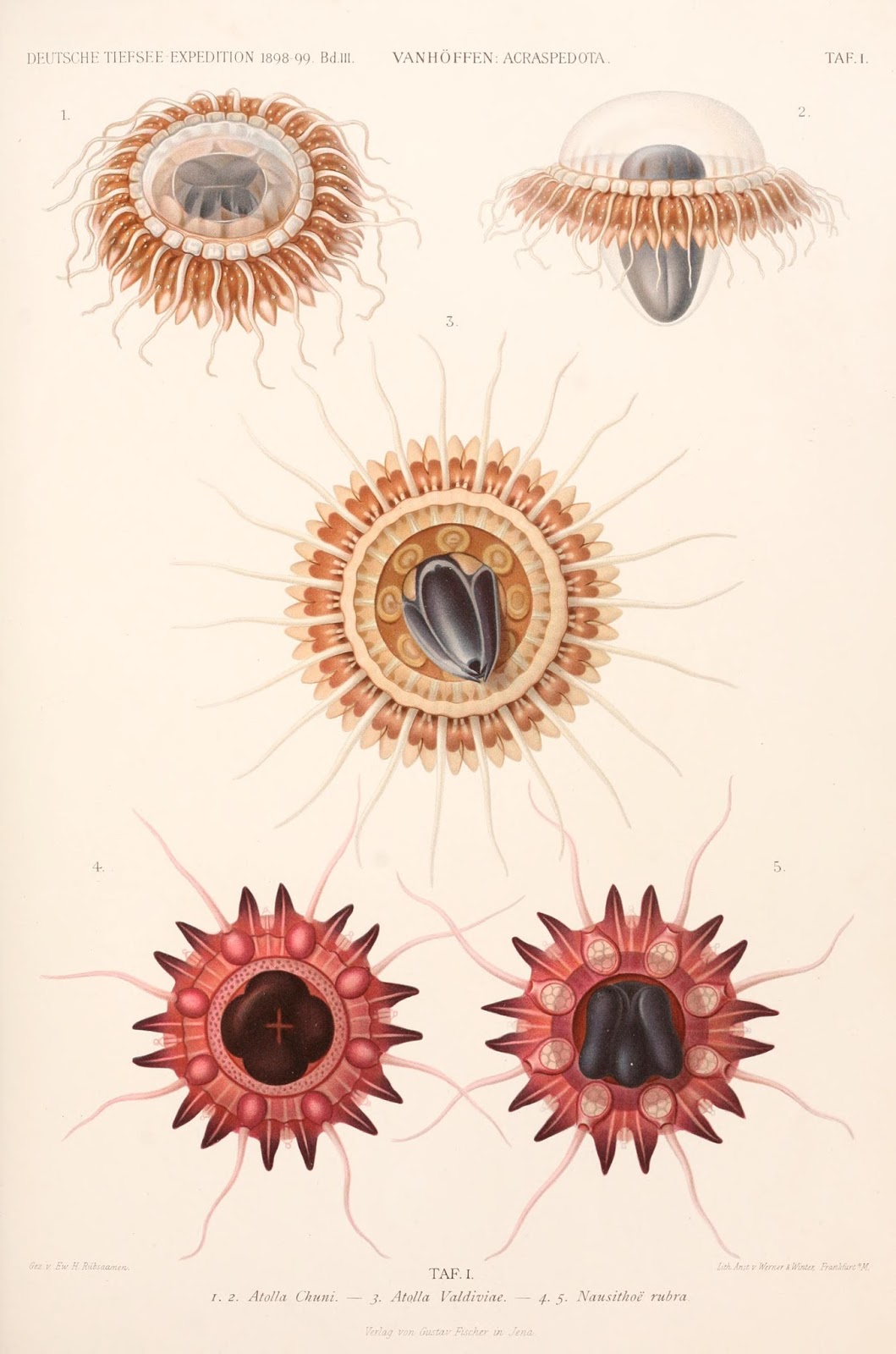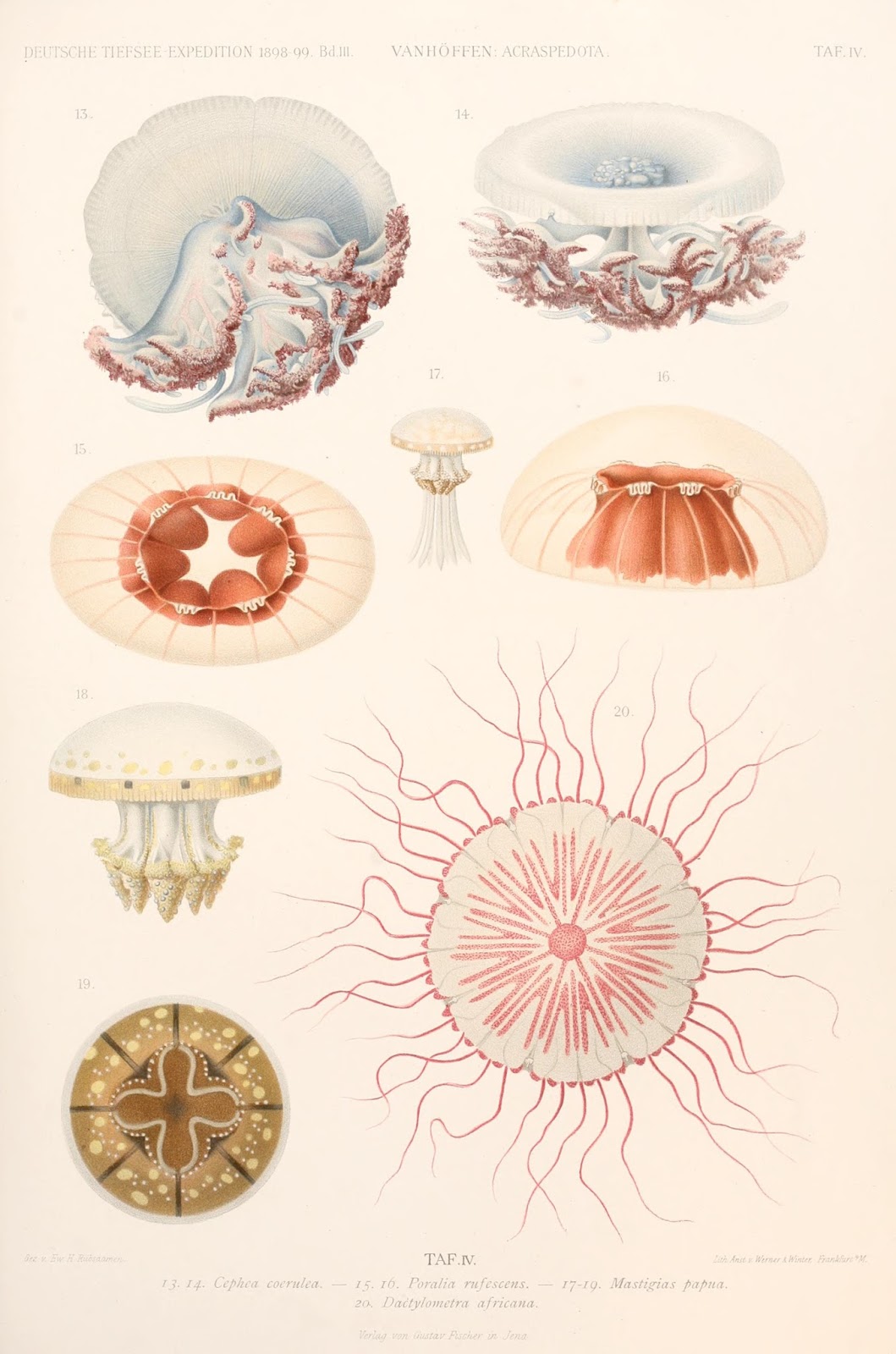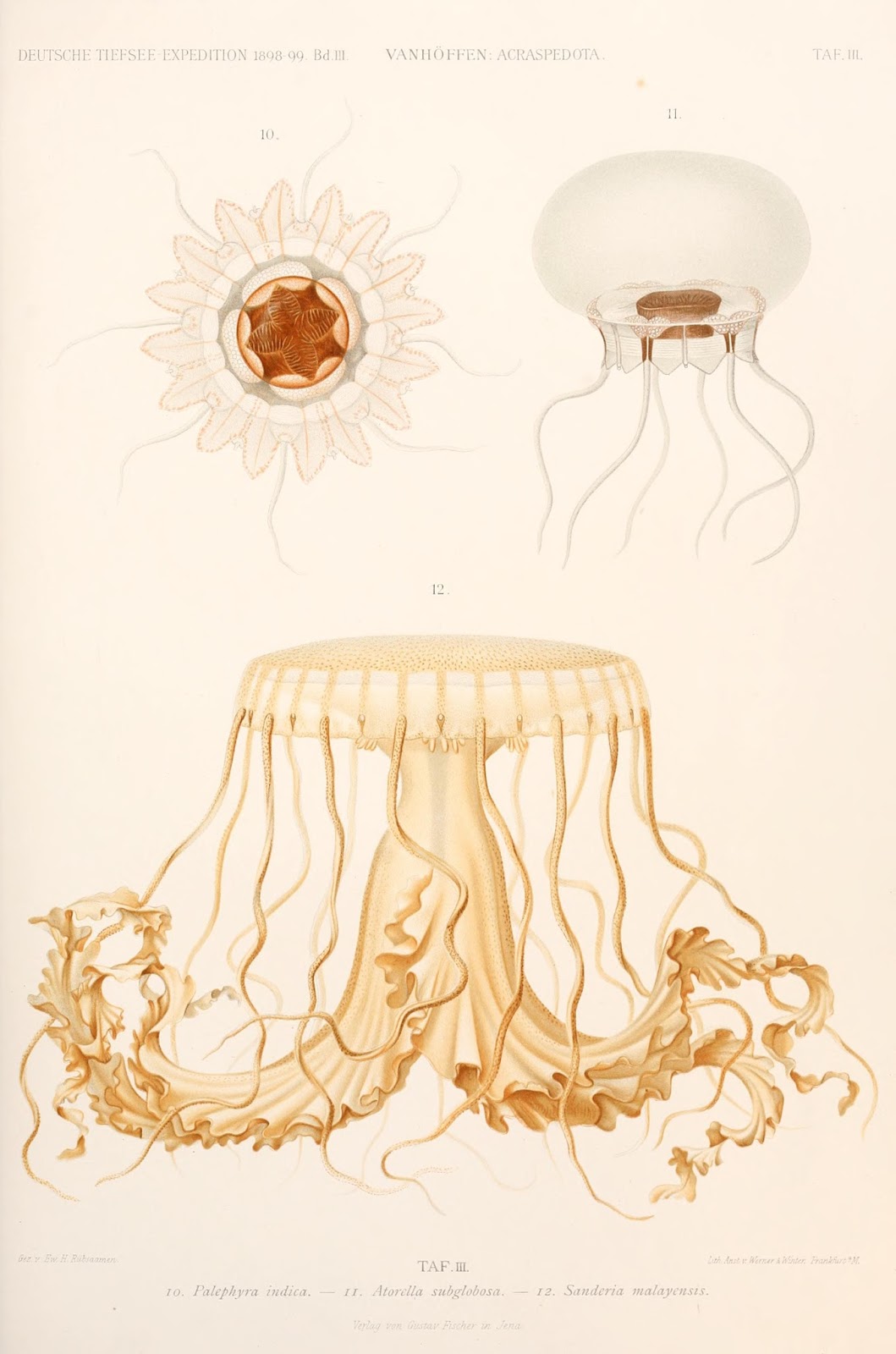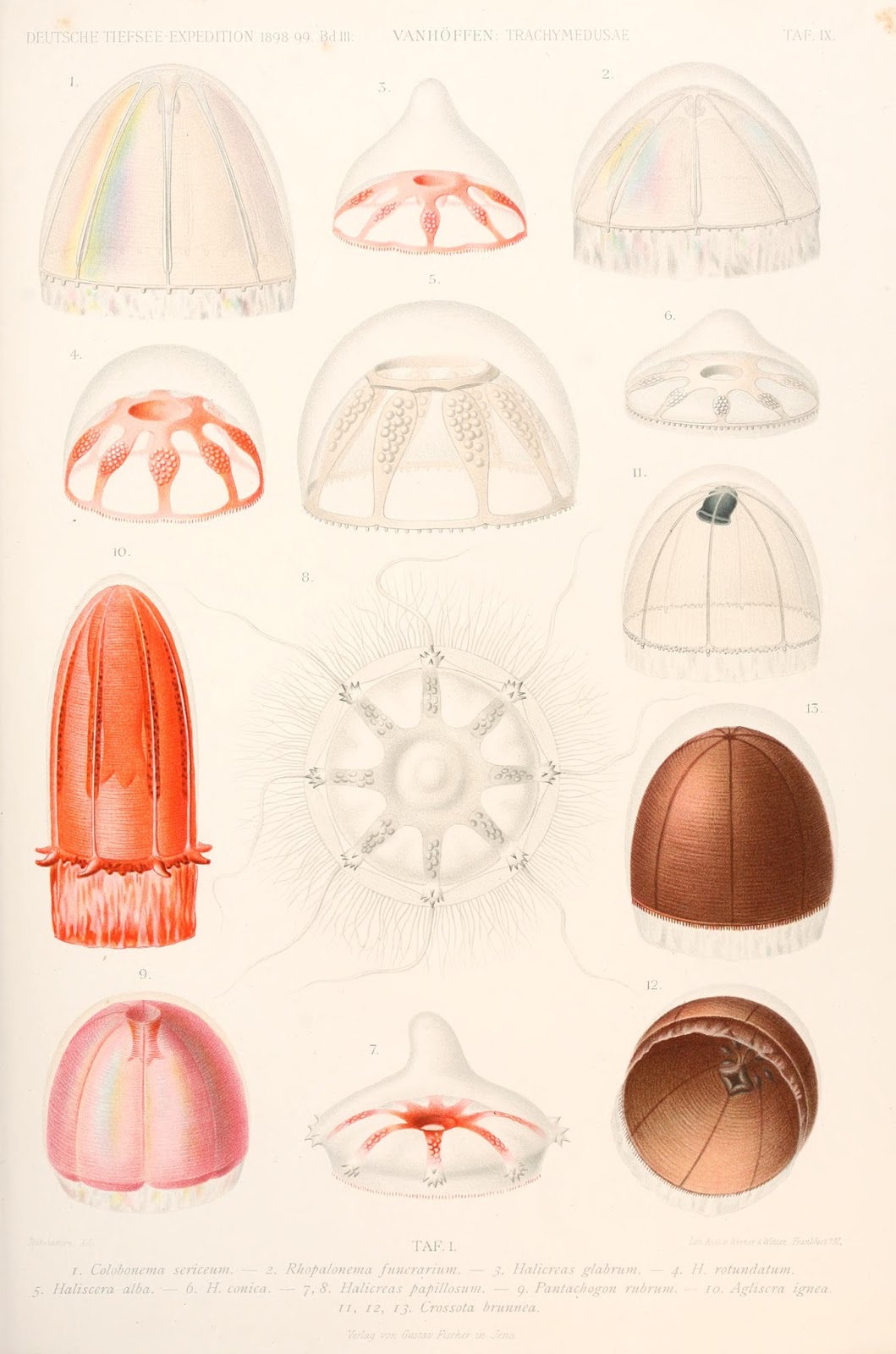Discovering the Deep Sea
 |
| Vanhöffen, Ernst. Die acraspeden Medusen der deutschen Tiefsee-Expedition, 1898-1899. http://biodiversitylibrary.org/page/2121639. Digitized by MBLWHOI Library. |
In 1872, the Royal Society of London launched the first non-commercial exploration of the deep sea – the Challenger Expedition. Covering nearly 70,000 nautical miles and resulting in the discovery of nearly 4,700 new-to-science species of marine life, the expedition revolutionized knowledge of the ocean and the field of oceanography. It also ignited an interest in deep-sea dredging as a means of scientific discovery.
Carl Chun, a German zoologist, was particularly inspired by the Challenger‘s discoveries. Recognizing an opportunity to secure Germany’s prominence in the developing field of deep-sea oceanography and expand the world’s scientific knowledge by targeting areas not visited by the Challenger, Chun presented a plan for a deep-sea expedition to the German Society of Naturalists and Physicians in 1897. In July 1898, under Chun’s scientific leadership, the Valdivia set sail from Hamburg with a team of exceptional scientists and an arsenal of the latest technology and equipment (Stiassny, 135).
 |
| Vanhöffen, Ernst. Die acraspeden Medusen der deutschen Tiefsee-Expedition, 1898-1899. http://biodiversitylibrary.org/page/2121607. Digitized by MBLWHOI Library. |
The expedition covered over 32,000 nautical miles, visited 268 stations around the West Coast of South Africa, the Gulf of Guinea, the Antarctic Sea, and a large portion of the Indian Ocean, and collected a wealth of specimens (many of which were new to science) from depths greater than 13,000 feet. Over seventy scientists worked for forty years to publish twenty-four volumes detailing the expedition’s scientific discoveries. The series, which was edited by Chun until his death in 1914 and afterwards by August Brauer, was entitled Wissenschaftliche Ergebniss der Deutschen Tiefsee-Expedition auf dem Dampfer “Valdivia” 1898-1899 (translates to “Scientific Results of the German Deep-Sea Expedition, on the steamer Valdivia 1898-1899″) (Stiassny, 136).
 |
| Vanhöffen, Ernst. Die acraspeden Medusen der deutschen Tiefsee-Expedition, 1898-1899. http://biodiversitylibrary.org/page/2121611. Digitized by MBLWHOI Library. |
German biologist Ernst Vanhöffen, an expert on jellyfish, was a member of the expedition’s scientific crew. After the voyage, he worked to study, classify, and describe the jellyfish specimens collected during the expedition. He published his findings in 1902 as two parts within the larger twenty-four volume series. The works were entitled Die acraspeden Medusen der deutschen Tiefsee-Expedition, 1898-1899 and Die craspedoten Medusen der deutschen Tiefsee-Expedition, 1898-1899. The extraordinary images in these titles were drawn by Ew. H. Rübsaamen and lithographed by Fritz Winter, the expedition’s shipboard artist (Stiassny, 139).
 |
| Vanhöffen, Ernst. Die craspedoten Medusen der deutschen Tiefsee-Expedition, 1898-1899. http://biodiversitylibrary.org/page/2121715. Digitized by MBLWHOI Library. |
You can learn more about this amazing expedition, the resulting publications, and Chun and Vanhöffen’s work in Dr. Melanie L. J. Stiassny’s Natural Histories: Opulent Oceans, published as part of Extraordinary Rare Book Selections from the American Museum of Natural History Library. Browse the public domain volumes of Wissenschaftliche Ergebniss der Deutschen Tiefsee-Expedition auf dem Dampfer “Valdivia” 1898-1899 in BHL, digitized by the MBLWHOI Library and Smithsonian Libraries.
References
Stiassny, Melanie L.J. (2014). Natural Histories Opulent Oceans: Extraordinary Rare Book Selections from the American Museum of Natural History Library. New York: Sterling Publishing.





Leave a Comment